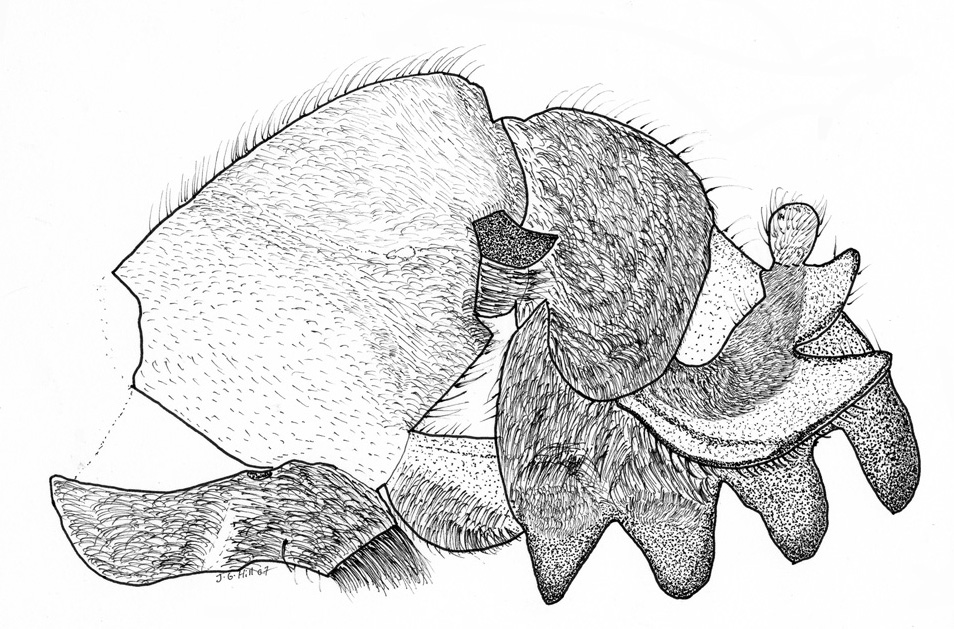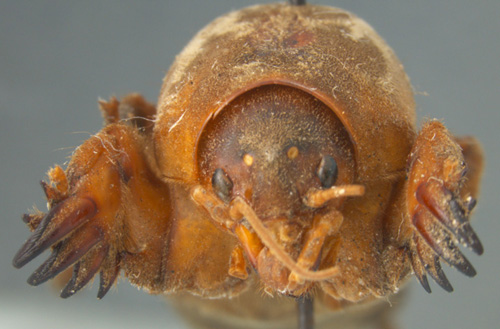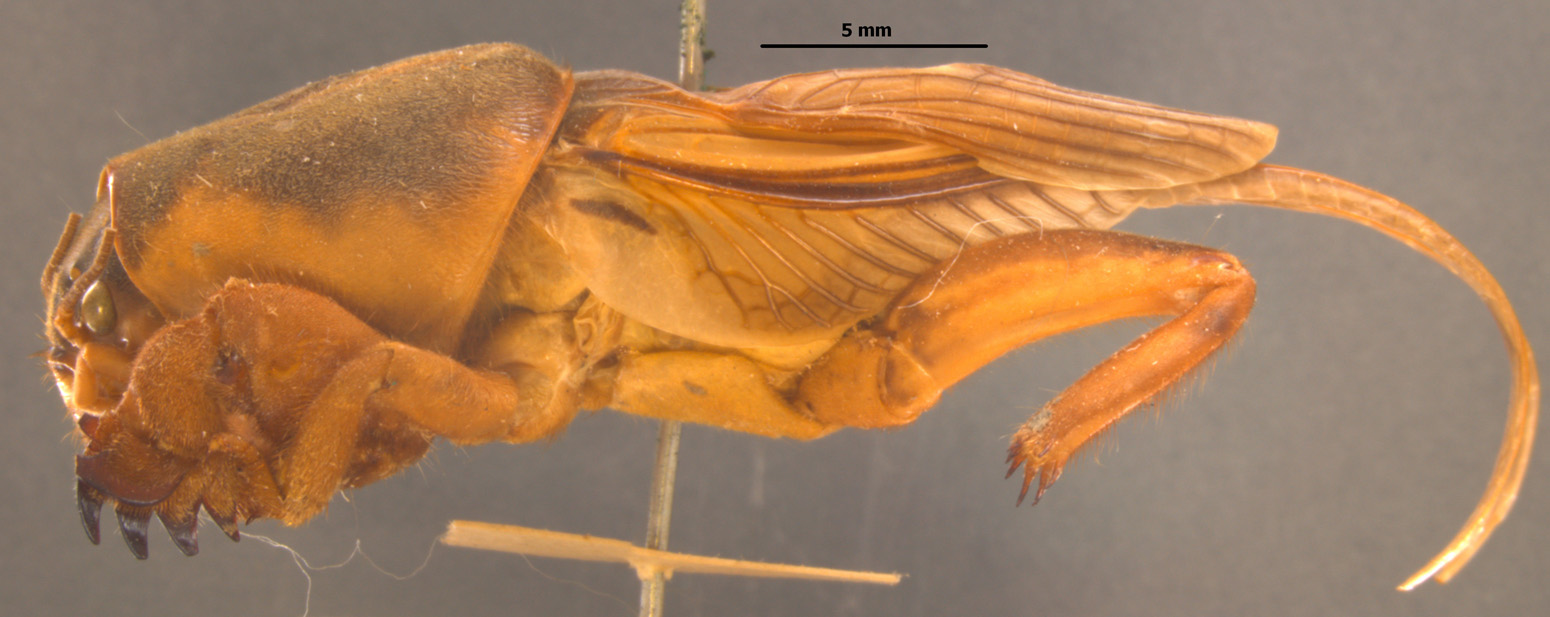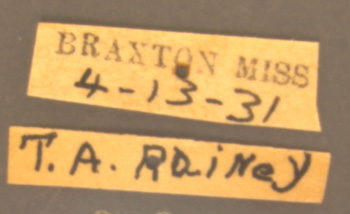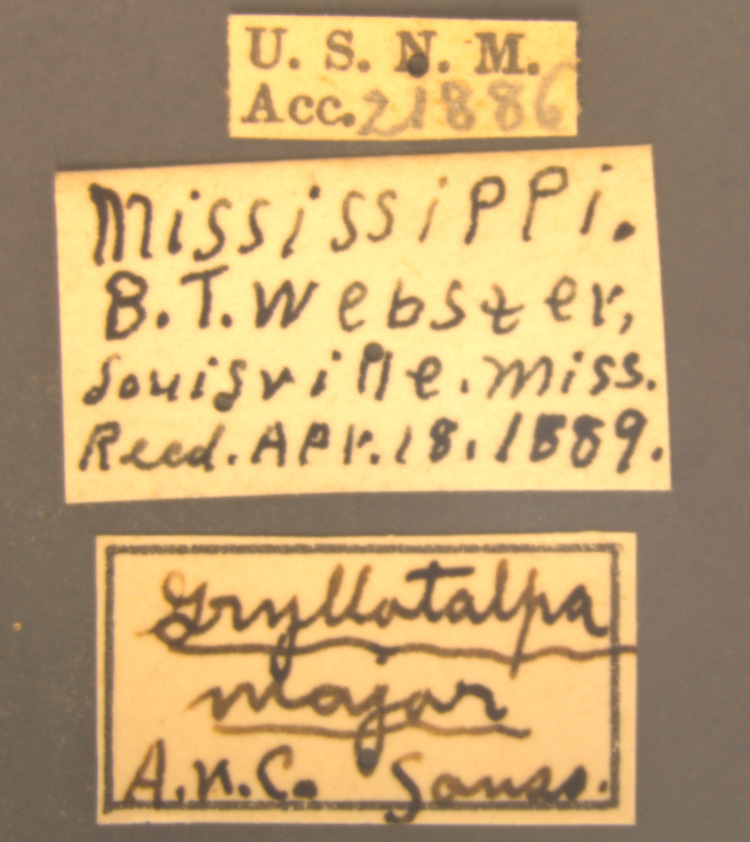Gryllotalpa major Saussure
|
|
Forelimb of G. major |
|
Frontal view of the Braxton, MS specimen of G. major. |
|
Frontal view of the "Louisville, MS" speciemen of G. major. |
|
Lateral view of the Braxton, MS specimen of G. major. |
|
Lateral view of the"Louisville, MS" specimen of G. major. |
|
Label of one of the Mississippi speciemens of G. major. (Specimen depostied in MEM) |
Label of one of the Mississippi speciemens of G. major. (Specimen deposited in USNM) |
This species is most similar to G. gryllotapla, but can be differentiated based on the shape of the trocantal lobe. This is the largest native cricket in the United States, and it seems to be dependant on remnants of tall grass prairie for survival. Before the 1980's little information was known about this species. However, in the late 1980's it was noticed that few recent collections of this species had been made. Researchers began searching for this insect in area's where it would likely occur, namely in the prairie states of Arkansas, Indiana, Kansas, Mississippi, Missouri, Oklahoma, and Texas. Mississippi? Yes, historically extensive areas of prairie once covered two separate regions of Mississippi. One region was called the Black Belt Prairie and the other is called the Jackson Prairie. These prairies share many species of plant and insect with the Great Plains. Prairie biota of these southeastern prairies face similar problems to that of the Great Plains in that agriculture, development, and fire suppression have resulted in habitat loss. One specimen of G. major is known from each of these regions. However, both are considerably old. The Black Belt specimen was collected in 1889, and the Jackson Prairie specimen in 1931. Populations in the midwest currently seem relatively stable, however; recent surveys for this insect in Mississippi and Alabama have not located any current populations, and this species is though to be extirpated from this portion of its range. Though Louisville, MS is located just west of the Black Belt, United States census records indicated that the collector, "B. T. Webster" lived on a farm east of Louisville, making it likely that the specimen was collected there, and Louisville was the nearest town. I would like to thank Pat Dakin for tracking "B. T. Webster" down in the census records making it possible for more approximate data to be gathered about this specimen. |
|


